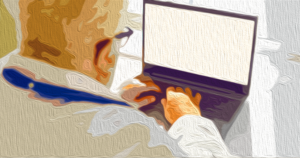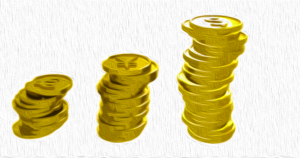Understanding Bitcoin Self-Custody
Bitcoin operates in a completely decentralized system, offering no option to reverse payments or access customer support for assistance. When you opt for self-custody of your Bitcoin, the responsibility for safeguarding your funds lies solely with you. Self-custody empowers you to have control over your funds, preventing anyone from freezing your assets or obstructing your payment transactions. While self-custody provides significant advantages, it also demands a high level of accountability.
Risks and Consequences
Mistakes in Bitcoin transactions are irreversible, especially when funds are sent to the wrong address. Additionally, compromising your seed phrase exposes your funds to theft, with no recourse for retrieval. Losing access to your keys and seed phrase eliminates any possibility of recovering your wallet, similar to the finality of losing cash. Safeguarding substantial amounts of money, including Bitcoin, can induce anxiety due to the heightened risk associated with protecting these assets.
Types of Crypto Wallets
When managing Bitcoin, choosing the right wallet is crucial. Custodial wallets, provided by centralized exchanges, resemble traditional bank accounts, limiting your control over your funds. In contrast, non-custodial wallets offer complete ownership of your assets, but each type comes with its own set of trade-offs. Software wallets, installed on devices like mobile phones or laptops, provide convenience but are susceptible to hacking. Hardware wallets, designed to secure private keys offline, offer enhanced protection and are ideal for storing significant amounts of Bitcoin.
Best Practices for Self-Custody
To ensure the safe management of your Bitcoin holdings, consider the following steps:
Verify Backups
Generate and securely store your seed phrase, the master key to your wallet, and verify its accuracy during setup. Generating an account and receiving address is a crucial initial step before engaging in transactions.
Test Transactions
Initiate a test transaction to confirm the accuracy of wallet addresses and validate the receipt of funds. Sending a small test amount before transferring larger sums can mitigate potential risks associated with compromised wallets.
Secure Backups
Store seed phrase backups offline on physical mediums like paper or steel plates to prevent unauthorized access. Avoid digital backups that are vulnerable to hacking and prioritize security measures to protect your funds.
Implement Multisig Security
For enhanced security, consider using multisig wallets that require multiple keys to authorize transactions. Ensure backups include public keys to access your Bitcoin even in the event of key loss.
Maintain Confidentiality
Avoid disclosing details of your Bitcoin holdings to minimize the risk of targeted attacks and theft. Exercise discretion in discussing your assets to mitigate potential security threats.
Final Thoughts
While self-custody of Bitcoin may seem daunting, understanding the available tools and best practices can alleviate concerns and enhance security. By adopting a cautious approach and prioritizing security measures, you can confidently navigate the realm of Bitcoin self-custody with ease.
Frequently Asked Questions
Can I purchase gold with my self directed IRA?
While you can purchase gold from your self-directed IRA (or any other brokerage firm), you must first open a brokerage account such as TD Ameritrade. You can also transfer funds from another retirement account if you already have one.
The IRS allows individuals to contribute as high as $5,500 ($6,500 if they are married and jointly) to a traditional IRA. Individuals can contribute up to $1,000 annually ($2,000 if married and filing jointly) directly to a Roth IRA.
You should consider buying physical gold bullion if you decide to invest in it. Futures contract are financial instruments that depend on the gold price. You can speculate on future prices, but not own the metal. You can only hold physical bullion, which is real silver and gold bars.
How can you withdraw from an IRA of Precious Metals?
First, you must decide if you wish to withdraw money from your IRA account. After that, you need to decide if you want to withdraw funds from an IRA account. Next, make sure you have enough money in order for you pay any fees or penalties.
You should open a taxable brokerage account if you're willing to pay a penalty if you withdraw early. You will also have to account for taxes due on any amount you withdraw if you choose this option.
Next, figure out how much money will be taken out of your IRA. This calculation will depend on many factors including your age at the time of withdrawal, how long the account has been in your possession, and whether you plan to continue contributing towards your retirement plan.
Once you know how much of your total savings to convert to cash, it's time to choose the type of IRA that you want. Traditional IRAs allow for you to withdraw funds without tax when you turn 59 1/2. Roth IRAs, on the other hand, charge income taxes upfront but you can access your earnings later and pay no additional taxes.
Finally, you'll need to open a brokerage account once these calculations are completed. To encourage customers to open accounts, brokers often offer signup bonuses and promotions. Avoid unnecessary fees by opening an account with your debit card, rather than your credit card.
When it comes time to withdraw your precious metal IRA funds, you will need a safe location where you can keep your coins. Some storage facilities will take bullion bars while others require you only to purchase individual coins. Before choosing one, consider the pros and disadvantages of each.
For example, storing bullion bars requires less space because you aren't dealing with individual coins. But you will have to count each coin separately. However, keeping individual coins in a separate place allows you to easily track their values.
Some people like to keep their coins in vaults. Others prefer to store them in a safe deposit box. You can still enjoy the benefits of bullion for many years, regardless of which method you choose.
Can the government seize your gold?
Because you have it, the government can't take it. You earned it through hard work. It belongs exclusively to you. There may be exceptions to this rule. You could lose your gold if convicted of fraud against a federal government agency. If you owe taxes, your precious metals could be taken away. However, even if you don't pay your taxes, your gold can be kept as property of the United States Government.
What is the tax on gold in an IRA
The tax on the sale of gold is based on its fair market value when sold. You don't pay taxes when you buy gold. It's not considered income. If you decide to make a sale of it, you'll be entitled to a taxable loss if the value goes up.
For loans, gold can be used to collateral. Lenders try to maximize the return on loans that you take against your assets. Selling gold is usually the best option. There's no guarantee that the lender will do this. They might just hold onto it. They may decide to resell it. You lose potential profits in either case.
In order to avoid losing your money, only lend against your precious metal if you plan to use it to secure other collateral. If you don't plan to use it as collateral, it is better to let it be.
Statistics
- You can only purchase gold bars at least 99.5% purity. (forbes.com)
- Instead, the economy improved, stocks rebounded, and gold plunged, losing 28 percent of its value in 2013. (aarp.org)
- Contribution limits$6,000 (49 and under) $7,000 (50 and up)$6,000 (49 and under) $7,000 (50 and up)$58,000 or 25% of your annual compensation (whichever is smaller) (lendedu.com)
- This is a 15% margin that has shown no stable direction of growth but fluctuates seemingly at random. (smartasset.com)
- Indeed, several financial advisers interviewed for this article suggest you invest 5 to 15 percent of your portfolio in gold, just in case. (aarp.org)
External Links
forbes.com
- Gold IRA – Add Sparkle to Your Retirement Nest Egg
- Understanding China's Evergrande Crisis – Forbes Advisor
cftc.gov
law.cornell.edu
- 7 U.S. Code SS7 – Designation board of trade as contract marketplaces
- 26 U.S. Code SS 408 – Individual retirement plans
wsj.com
- Saddam Hussein's Invasion Helped Uncage a Bear In 1990 – WSJ
- Want to Keep Gold in Your IRA at Home? It's not legal – WSJ
How To
Three ways to invest in gold for retirement
It is crucial to understand how you can incorporate gold into your retirement plans. There are many ways to invest in gold if you have a 401k account at work. You may also want to consider investing in gold outside of your workplace. If you have an IRA (Individual Retirement Account), a custodial account could be opened at Fidelity Investments. If precious metals aren't your thing, you may be interested in buying them from a dealer.
If you do invest in gold, follow these three simple rules:
- Buy Gold with Your Cash – Don't use credit cards or borrow money to fund your investments. Instead, put cash into your accounts. This will protect you from inflation and help keep your purchasing power high.
- Own Physical Gold Coins – You should buy physical gold coins rather than just owning a paper certificate. The reason for this is that physical gold coins are much more easily sold than certificates. You don't have to store physical gold coins.
- Diversify Your Portfolio. – Do not put all your eggs into one basket. By investing in multiple assets, you can spread your wealth. This helps to reduce risk and provides more flexibility when markets are volatile.
—————————————————————————————————————————————————————————————-
By: Bitcoin Magazine
Title: The Dos and Don’ts of Bitcoin Self-Custody
Sourced From: bitcoinmagazine.com/sponsored/the-dos-and-donts-of-bitcoin-self-custody
Published Date: Fri, 22 Mar 2024 13:30:00 GMT















